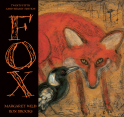Publisher's synopsis
Lost and afraid in the darkening bush, Dot is befriended by a kind Kangaroo. She eats the berries of understanding and is then able to communicate with all the bush creatures, who eventually guide her home.
The intriguing tale of Dot and her Kangaroo is told by Ethel Pedley with the charm that has made this book an Australian favourite since it was first published in 1899. Now, as then, children will be enthralled by this oldest of Australian classics, it will endure to entertain generations to come.
Awards
Dot and the Kangaroo was published before literature awards were given in Australia. It has been a best-seller with 22+ reprints since 1899. The book was adapted into an award-winning film in 1977 by Yoram Gross. It featured a combination of live-action and animation layered onto film of real bushland and well-known actors’ voices, including that of Spike Milligan as Platypus. The film was shown around the world and another eight films about Dot were made, all with the theme of the negative impact of humanity on Australia’s indigenous animal life.
Background
Dot and the Kangaroo was published in 1899, the year after Ethel Pedley’s death. With its theme of environmental conservation, the story has resonance with the romantic visions of the Australian bush evident in the poems of contemporaries Henry Kendall and Henry Lawson. Pedley’s descriptions of Platypus’ creek show the Australian bush as a place of wonder and beauty and her depictions of the native fauna place them as unique creatures in a distinctive landscape. Nevertheless, Pedley does not idealise the bush, as its dangers were very present to colonial Australians and she uses the ‘lost child’ trope, an image that featured in literature and the popular press at the time, as the entry to her theme. Hansel and Gretel is one example of this trope, which has been regularly imagined in Australian writing and paintings (see, for example, Lindsay’s 1965 Picnic at Hanging Rock and McCubbin’s Lost,1886).
Pedley’s theme of living in harmony with our native flora and fauna anticipated the ‘romantic nationalism’ of Federation (Johnston, 2010). The contrasts between indigenous and introduced species are clearly presented: with its echoes of Alice entering Wonderland (Carroll, 1864), Dot follows the non-native hare into the alien bush, to be found, not by the search party (another feature of lost child stories), but by the indigenous Kangaroo who offers her security. Dot learns the true value of the bush and its native animals through Kangaroo (Rahbek 2007), who makes a significant distinction to Dot (and the reader) about the greatest danger in the bush: ‘The Black Humans kill and devour us; but they, even, are not so terrible as the Whites, who delight in taking our lives and torturing us just as an amusement’ (Pedley 1899, unpaged). In her explicit dedication to children, Pedley makes a’plea for the conservation of Australian wildlife’ (Saxby 1969, p. 183) and positions them as stewards of the Australian environment (Massey 2009). Dot and her family illustrate this in creating a safe waterhole for the animals on their property, while the white townspeople protect the animals, as they are now Dot’s friends. The environmental discourses in Dot and the Kangaroo are the beginning of an Australian ‘fascination with landscape … [and] the evolution of bush mythologies as part of national consciousness and identity’ (Johnston 2010, p.514–515). Today, this awareness has progressed to the mandatory cross-curriculum priority of Sustainability in the Australian Curriculum.
Historical context when the title was published
In Australia:
- The total population of the colonies was around 3 million Europeans.
- The total population of Aboriginal and Torres Strait Islander Peoples was estimated around 93,000, a decrease of almost 87% from 700,000 in 1788.
- The leaders of the six Australian colonies met in Melbourne in early 1899 to discuss confederation. The Australian Premiers’ Conference agreed that Australia’s capital should be located between Sydney and Melbourne.
- Legislation for the ‘protection’ of Indigenous peoples had been established in the different colony states, and every aspect of Indigenous life was controlled. Protection Boards were empowered to remove children from their families. The Stolen Generations’ legislationwas not repealed until 1969.
- In March, the worst known natural disaster in Australian European history occurred when the category 5 Cyclone Mahina hit the coast of Queensland at Bathurst Bay, with a loss of 400 lives.
- By the end of 1899, colonial troops had left to fight in the Second Boer War and an electric tram service had commenced in Melbourne and Sydney.
Internationally:
- Queen Victoria was on the British throne and the Qing dynasty ruled China.
- The paperclip was patented.
- Many writers, musicians and actors, whose fame continues today, were born, such as E. B. White (Charlotte’s Web), Ernest Hemingway, Vladimir Nabokov, Noel Coward, Duke Ellington, Alfred Hitchcock, Humphrey Bogart, Fred Astaire and even Al Capone.
Learn more
At TROVE find newspaper articles, journals, articles and data sets, Pedley’s biography, music, sound and video resources and related stories, and an illustrated edition based on the 1977 Yoram Gross film.
Find the full Yoram Gross animated movie on YouTube, and excerpts through Australian Screen Online.
Other texts related to conservation and sustainability are:
- Storm Boy by Colin Thiele.
- Hairy nose, itchy butt by Elizabeth Frankel and Garry Duncan.
- The world that we want by Kim Toft.
- V is for vanishing by Patricia Mullins, with author information available here.






